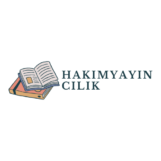Nonfiction book writing can be one of the most rewarding experiences for any writer. It’s not just about sharing facts or telling a story; it’s about connecting with readers and providing them with valuable insights. Whether you’re an expert in your field or simply passionate about a subject, your unique perspective can inspire and educate others.
I’ve found that the journey of crafting a nonfiction book involves more than just research and writing. It requires a deep understanding of your audience and a clear vision of what you want to convey. In this article, I’ll explore the essential steps and strategies that can help you transform your ideas into a polished manuscript that resonates with readers and stands out in a crowded market.
Key Takeaways
- Understand Nonfiction: Nonfiction focuses on factual content aimed at educating and informing readers, covering various genres like biographies, self-help, and journalism.
- Plan Thoroughly: Define your book’s purpose, target audience, and create a structured outline to ensure your message resonates effectively with readers.
- Conduct Comprehensive Research: Use a mix of credible primary and secondary sources to gather information and organize your notes for easier reference during the writing process.
- Engage Your Audience: Adopt a clear writing style and employ techniques like hooks, questions, and visual aids to captivate readers and enhance their understanding.
- Edit and Revise: Self-editing and professional editing are crucial steps to improve clarity, coherence, and quality in your manuscript, ensuring factual accuracy and readability.
- Choose the Right Publishing Path: Weigh the advantages of traditional vs. self-publishing, considering factors like creative control, marketing responsibilities, and financial implications when making your decision.
Nonfiction Book Writing
Nonfiction book writing entails crafting content based on facts, real events, and truthful information. It focuses on educating, informing, or inspiring readers through well-researched narratives.
Definition and Importance
Nonfiction encompasses various forms of writing, including biographies, self-help guides, and academic texts. It provides accurate information that guides readers through complexities of real-life topics. Its importance lies in fostering informed decision-making, enhancing knowledge, and encouraging critical thinking among readers. Connecting authentically with the audience enhances trust and credibility, making the content more impactful.
Common Genres in Nonfiction
Several genres exist within nonfiction writing. Understanding these genres helps tailor content to specific audiences.
- Biographies: Focus on individuals’ lives, exploring their experiences and achievements.
- Self-Help: Offers strategies and advice for personal development or overcoming challenges.
- Memoirs: Personal accounts that reflect the author’s life experiences and lessons.
- History: Examines past events, providing context and analysis for understanding the present.
- Travel Writing: Shares insights and experiences from journeys to different places.
- Cookbooks: Provides recipes and culinary techniques, often including cultural insights.
- Journalism: Reports factual news and events, conveying truth to the public.
Each genre serves a unique purpose, catering to diverse reader interests while establishing the writer’s authority.
The Writing Process
The writing process for a nonfiction book involves several critical steps, each contributing to a polished manuscript. I’ll detail the key components, including planning, researching, and structuring the content effectively.
Planning Your Nonfiction Book
Planning a nonfiction book encompasses defining the book’s purpose, audience, and goals. I start by clarifying the main message and identifying target readers. This clarity guides my writing and ensures the content resonates with the intended audience. To create a detailed outline, I break down the book into chapters or sections, establishing key points for each. Setting realistic timelines keeps my project on track, allowing room for revisions and adjustments.
Research Techniques
Research techniques play a vital role in nonfiction writing. I utilize a mix of primary and secondary sources to gather information. Primary sources may include interviews, surveys, and firsthand accounts, while secondary sources involve books, articles, and verified online resources. I ensure all sources are credible and relevant to maintain accuracy. Organizing notes is crucial; I create a system for categorizing information based on themes or chapters, making retrieval easier during the writing process.
Structuring Your Content
Structuring content effectively enhances readability and engagement. I focus on a logical flow of information, guiding readers seamlessly from one point to another. Each chapter begins with an introduction outlining its main topics, followed by detailed sections that delve into specific concepts, and concludes with a summary or key takeaways. Utilizing headings and subheadings provides visual breaks, supporting a better understanding of the material. In addition, incorporating bullet points or numbered lists can simplify complex information, helping readers grasp essential concepts quickly.
Crafting Engaging Content
Creating engaging content is essential in nonfiction book writing. It requires a compelling writing style, a distinct voice, and effective techniques to captivate readers.
Writing Style and Voice
Choosing the right writing style and voice defines the reader’s experience. I focus on clarity, making complex ideas accessible through simple language. I adopt an active voice to create immediacy and connection. Each sentence should resonate with the audience’s interests and experiences. Consistency in tone—whether formal, conversational, or authoritative—fosters trust. I often incorporate anecdotes or case studies, giving readers relatable contexts that enhance understanding.
Techniques for Captivating the Reader
Implementing effective techniques draws readers into the narrative. I employ hooks at the beginning of chapters, sparking curiosity right away. Using questions can encourage introspection and engagement, prompting readers to think critically. I incorporate subheadings and bullet points to organize information, improving readability. Visual aids, such as charts and graphs, support claims and break up text, keeping readers visually engaged. Telling a story within the nonfiction framework adds emotional depth, making information more memorable and impactful.
Editing and Revising
Editing and revising play crucial roles in crafting a polished nonfiction manuscript. These processes ensure clarity, coherence, and the overall quality of the writing.
The Importance of Self-Editing
Self-editing serves as a vital step in refining my manuscript before submitting to editors. It allows for a fresh perspective on my work, enabling me to spot errors, inconsistencies, and areas needing improvement. Reviewing for clarity involves checking sentence structure, word choice, and flow to enhance readability. Additionally, removing redundant phrases and jargon sharpens communication, making the content accessible to my audience.
I focus on fact-checking to ensure accuracy and verify claims. In nonfiction writing, credibility hinges on presenting well-researched information. Utilizing editing tools and techniques, like reading aloud and reversing the order of paragraphs, helps identify mistakes and awkward phrasing.
Working with Professional Editors
Engaging with professional editors elevates the quality of my manuscript significantly. They provide an objective viewpoint that I might overlook during self-editing. Professional editors specialize in various editing types, such as developmental, copyediting, and proofreading. Developmental editing focuses on the structure and content, offering feedback on themes, pacing, and audience engagement.
Copyediting ensures grammatical correctness, punctuation accuracy, and consistency in style, while proofreading addresses typographical errors and formatting issues. Collaborating with an editor involves clear communication about my goals and expectations. Establishing a timeline for revisions, discussing fees, and understanding the editing process fosters a productive working relationship.
By combining self-editing skills with professional expertise, I enhance my nonfiction manuscript, making it more compelling and polished for readers.
Publishing Your Nonfiction Book
Publishing a nonfiction book involves choices that deeply impact reach and success. Options include traditional publishing and self-publishing, each with distinct advantages.
Traditional vs. Self-Publishing
Traditional publishing involves securing a literary agent and submitting a manuscript to publishing houses. Those houses provide editorial support, marketing, and distribution, enhancing credibility and visibility. Advances against royalties are common, but acceptance rates can be low due to high competition.
Self-publishing offers more control over content, design, and pricing. Writers retain rights and earn higher royalties, often around 60-70%. I must consider the responsibilities of marketing and distribution, as these fall solely on me. Platforms like Amazon Kindle Direct Publishing and IngramSpark streamline the self-publishing process, while print-on-demand services reduce upfront costs.
Both methods can lead to success, but my choice between them must align with my preferences for creative control, financial investment, and marketing commitment.
Marketing Strategies for Success
Effective marketing strategies are crucial for a successful nonfiction book launch. I can start by identifying my target audience and creating buyer personas to understand their needs and preferences. Building an author platform through social media engagement, blog posts, and email newsletters fosters connections with potential readers.
Utilizing online resources like BookBub and Goodreads increases visibility and fosters community interaction. Collaborating with influencers or industry experts through guest blogging or podcast interviews leverages their networks for broader reach. Hosting virtual book signings or webinars enhances engagement, creating buzz around my book.
I should also consider using paid advertising on social media platforms to target specific demographics, maximizing exposure. Implementing an effective pre-launch strategy, including a cover reveal or early reviews from beta readers, builds anticipation and encourages initial sales. Each marketing approach must align with my overall goals and resonate with my audience for maximum impact.
Writing Books
Writing a nonfiction book is a journey that combines passion with purpose. It’s about sharing knowledge and connecting with readers in meaningful ways. As I navigate this path I focus on the essential steps that lead to a polished manuscript.
From understanding my audience to crafting engaging content every decision shapes the reader’s experience. The process doesn’t end with writing; effective editing and choosing the right publishing route are crucial.
Finally I’m excited to embrace the marketing strategies that will bring my work to life. With dedication and the right approach I know I can create a nonfiction book that resonates and inspires.

